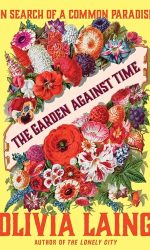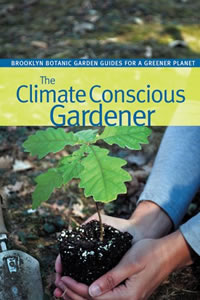 The Garden Against Time offers pleasures on multiple fronts. Olivia Laing weaves together elegantly a narrative of reviving her English garden originally designed by Mark Rumary, a well-known landscape designer; numerous accounts of other gardens and gardeners, some literary and some real; and a thread of deep searching into the exclusion underlying nearly all these gardens.
The Garden Against Time offers pleasures on multiple fronts. Olivia Laing weaves together elegantly a narrative of reviving her English garden originally designed by Mark Rumary, a well-known landscape designer; numerous accounts of other gardens and gardeners, some literary and some real; and a thread of deep searching into the exclusion underlying nearly all these gardens.
Although Laing had yearned for a garden of her own since early childhood, she was in her forties when she and her husband Ian found the right neglected garden to restore – in January 2020. It was only a third of an acre, “so cunningly divided that you could never see the entirety at once . . .” (p. 5). Then came Covid, and everything shut down. Three million people in Britain began gardening, and Olivia and Ian moved into their new home in August.
Preparing the soil with huge amounts of manure, waiting impatiently for a year to see which of Rumary’s original plants had survived, then laboring many months to put her plans in place – the story makes one ache in sympathy but feel inspired as well.
The other gardens in the book begin with Eden in John Milton’s “Paradise Lost,” and the poems of John Clare bewailing the enclosure of once public land. They include real English and Italian gardeners and gardens, especially Shrubland Hall.
William Morris receives much attention. One of this book’s great pleasures is Laing’s writing style. Her description of Morris shows that style nicely: “It’s true he was a dynamo, a spinning top, who compulsively taught himself to master a dozen crafts, who could weave a tapestry and dye a chintz, embroider a wall-hanging, construct a stained-glass window, write a poem (often on a bus and often too at the astounding rate of a thousand lines a day), illuminate a manuscript, bind and print a book, perhaps translating Homer or Virgil as an evening’s respite from the more exacting work” (p. 161). This book could be used in advanced writing classes as an example of how to play with the English language as if it were a musical instrument.
The subtitle, “In Search of a Common Paradise,” refers to the book’s underlying theme of unease about the unsavory underpinnings of many gardens – certainly all those Laing visits in this book. Do only rich people get to have gardens? Why can’t everyone have access to that soul satisfying pleasure Laing found in hers? Her research led to the slave trade behind Shrubland Hall’s wealth. On the other hand, Morris hoped for the opposite, a utopia where gardens (and all properties) are held in common.
Instead, Laing opts for a combination of public and private ownership: “We need gardens and the life they support established everywhere, if we are to survive” (p. 284). We do.
Many additional delicious nooks and crannies await the reader of “Gardens Against Time.” Run, do not walk, to the nearest library (ours). Don’t miss this book.
Reviews by Priscilla Grundy in The Leaflet, Volume 11, Issue 11, November 2024.

 “The Climate Conscious Gardener” is the latest in the Brooklyn Botanic Garden Guides for a Greener Planet. While most of the contributing authors live in the Northeast, one of the five chapters, “Turning Your Landscape into a Carbon Sink,” was written by Arboretum Foundation staff member Niall Dunne. To give an objective perspective, I’ll quote from a review in HortIdeas (published by Greg and Pat Williams in Gravel Switch, Kentucky — so no regional bias here): “Dunne’s chapter alone is worth getting the book…with valuable information on numerous techniques for sequestering carbon in backyard gardens. Wouldn’t it be great if amateurs throughout the U.S. could keep a really huge amount of carbon out of the atmosphere?”
“The Climate Conscious Gardener” is the latest in the Brooklyn Botanic Garden Guides for a Greener Planet. While most of the contributing authors live in the Northeast, one of the five chapters, “Turning Your Landscape into a Carbon Sink,” was written by Arboretum Foundation staff member Niall Dunne. To give an objective perspective, I’ll quote from a review in HortIdeas (published by Greg and Pat Williams in Gravel Switch, Kentucky — so no regional bias here): “Dunne’s chapter alone is worth getting the book…with valuable information on numerous techniques for sequestering carbon in backyard gardens. Wouldn’t it be great if amateurs throughout the U.S. could keep a really huge amount of carbon out of the atmosphere?”